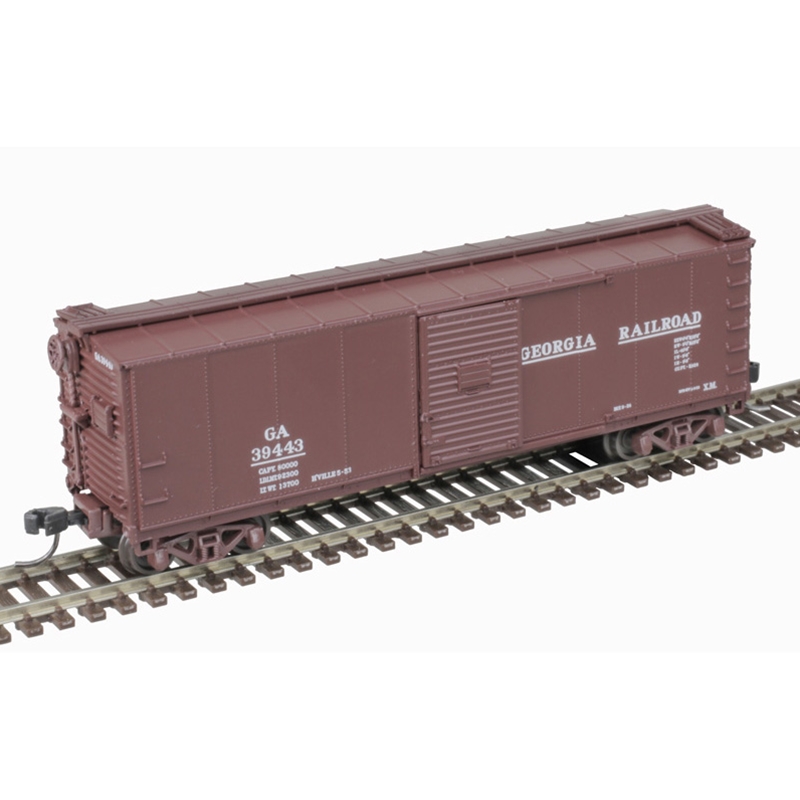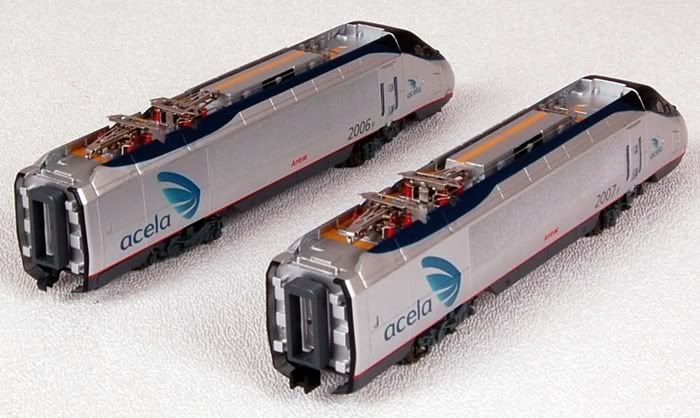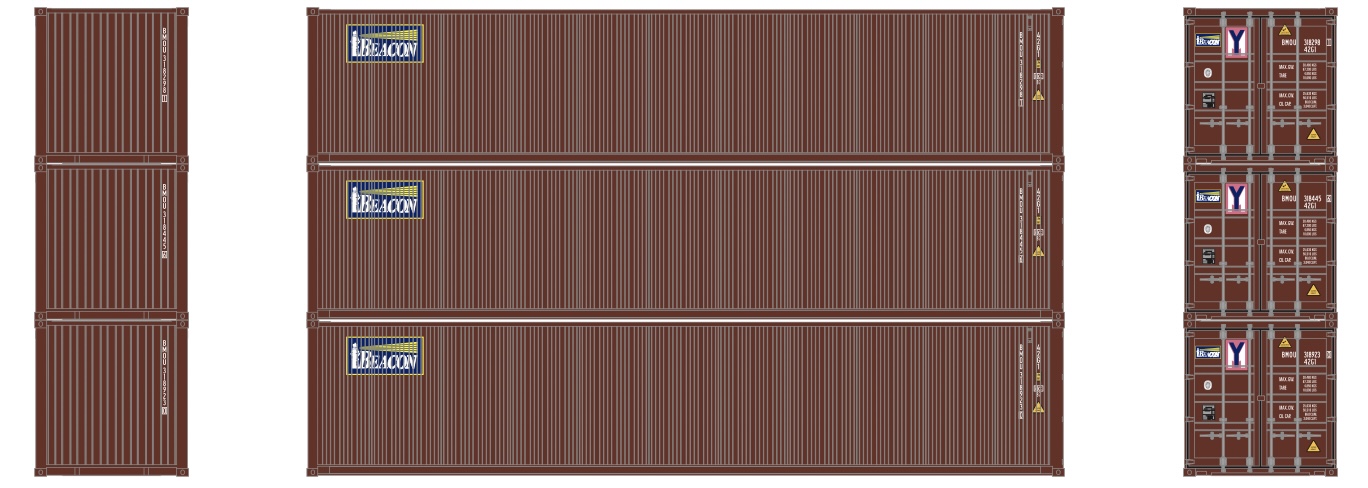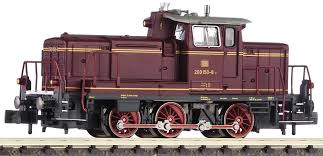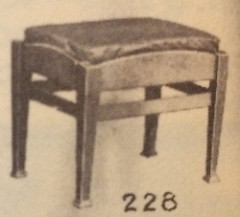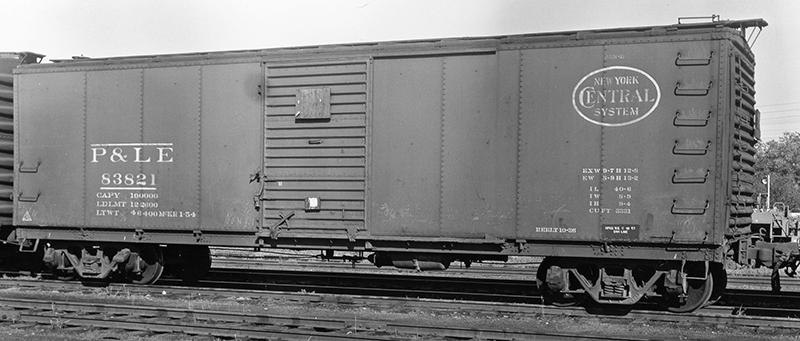Model Information: This Atlas model was announced in June 2006 with an April, 2007 delivery date. It is one of the only Atlas models to feature opening doors. This model features:
Opening Door;
Andrews trucks;
Ready-to-run;
Accurate painting and printing;
AccuMate® couplers;
Brake detail;
Highly detailed body;
Simulated wood or steel door as per the prototype;
Fishbelly or Standard underframe as per the prototype;
Different rib ends (7-8 or 5-5-5) as per the prototype;
Undecorated cars come with both simulated wood or steel door.
Prototype History: By the beginning of WWII, the majority of the classic USRA double-sheathed box cars and their clones were rebuilt with steel sides. More rebuilds followed in the late 1940s and early 1950s. By late 1948, close 14,000 of the original 24,500 USRA double-sheathed cars had been rebuilt with quite a degree of variation including the end, door and underframe. These steel side rebuilds were far more popular than their single-sheathed counterparts.
Road Name History: 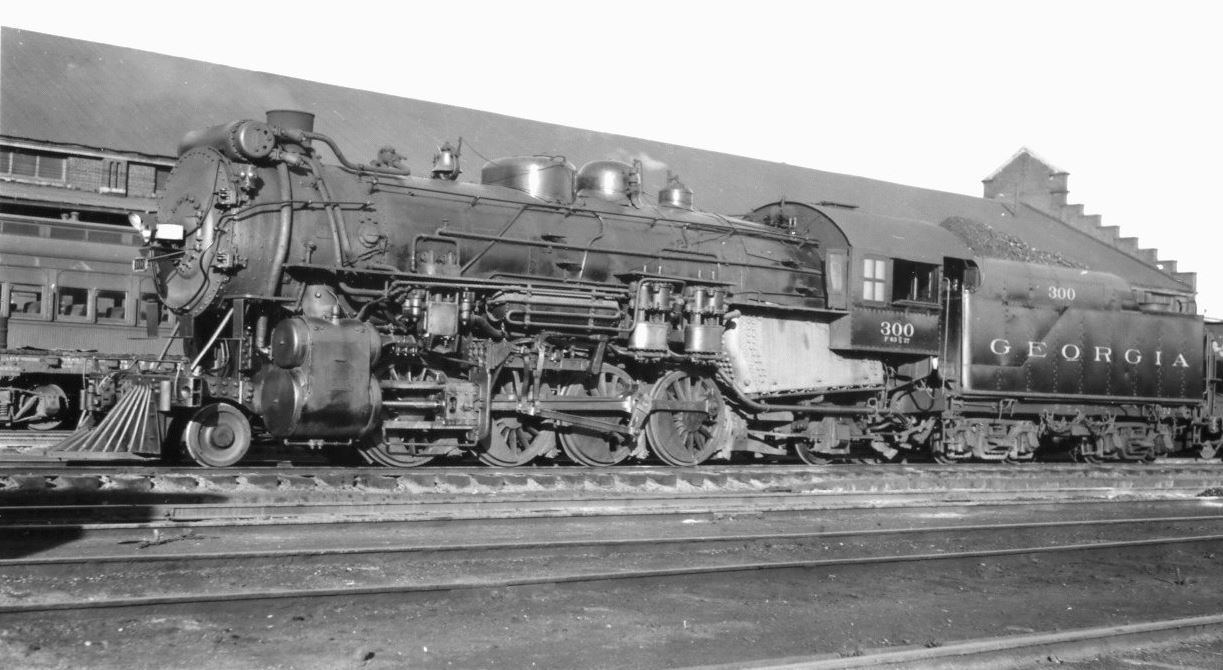 As with the Clinchfield, for most of its history the Georgia Railroad existed as a non-incorporated company operating the railroad property of the Georgia Railroad & Banking Company on behalf of Louisville & Nashville and Atlantic Coast Line. In turn, the Georgia controlled the two West Point Route railroads. The Georgia Railroad & Banking Company was established in 1833. The 329 mile line is Y shaped with Augusta on the east end, and Atlanta and Macon in the west, plus a trio of branches on the Atlanta leg. The Georgia had been built to 5’ gauge like most lines in the South. It was standard gauged in 1886.
As with the Clinchfield, for most of its history the Georgia Railroad existed as a non-incorporated company operating the railroad property of the Georgia Railroad & Banking Company on behalf of Louisville & Nashville and Atlantic Coast Line. In turn, the Georgia controlled the two West Point Route railroads. The Georgia Railroad & Banking Company was established in 1833. The 329 mile line is Y shaped with Augusta on the east end, and Atlanta and Macon in the west, plus a trio of branches on the Atlanta leg. The Georgia had been built to 5’ gauge like most lines in the South. It was standard gauged in 1886.
The big power in the days of steam were Mikados and Pacifics. Some of the Mikes were picked up second hand from New York Central and Clinchfield. Motive power from the West Point Route roads was frequently seen on the Georgia and vice versa. The Georgia dieselized fairly early with EMD and Baldwin switchers, F units and geeps (set up to run short-hood-forward like their parents) in a nice blue with silver band paint scheme also used on the West Point Route. In the 60’s, they dropped the silver band and by the time their GP40s arrived they had switched to black with white lettering and frame stripes. The diesel fleet hovered around 30 units. The last locomotives delivered to Georgia were GP38-2’s in the late 70s and they arrived in Family Lines gray.
Passenger service on the Georgia had always been a modest affair and during the 60s had dwindled to just mixed trains. When Amtrak appeared, Georgia opted out, instead continuing to run the mixed trains until 1983. This was because in Georgia Railroad & Banking Company’s original charter in 1833 the line was exempted from state and local taxes with the exception of a modest tax on net profits. In return, the company was to supply passenger service on its routes in perpetuity. During the 1970s, the “super-mixed” trains often consisted of 3 diesels, 50 or so freight cars, a streamlined coach, and a caboose and they would switch industries and stop (the coach) at depots along the way.
In 1983, the Seaboard Coast Line and Louisville & Nashville merged to form Seaboard System. As such, there was no longer a reason to have their two unincorporated lines, Georgia and Clinchfield, as separate entities and they were merged into Seaboard System along with the West Point Route roads. The mixed train operation ended less than 4 months after the merger.

The big power in the days of steam were Mikados and Pacifics. Some of the Mikes were picked up second hand from New York Central and Clinchfield. Motive power from the West Point Route roads was frequently seen on the Georgia and vice versa. The Georgia dieselized fairly early with EMD and Baldwin switchers, F units and geeps (set up to run short-hood-forward like their parents) in a nice blue with silver band paint scheme also used on the West Point Route. In the 60’s, they dropped the silver band and by the time their GP40s arrived they had switched to black with white lettering and frame stripes. The diesel fleet hovered around 30 units. The last locomotives delivered to Georgia were GP38-2’s in the late 70s and they arrived in Family Lines gray.
Passenger service on the Georgia had always been a modest affair and during the 60s had dwindled to just mixed trains. When Amtrak appeared, Georgia opted out, instead continuing to run the mixed trains until 1983. This was because in Georgia Railroad & Banking Company’s original charter in 1833 the line was exempted from state and local taxes with the exception of a modest tax on net profits. In return, the company was to supply passenger service on its routes in perpetuity. During the 1970s, the “super-mixed” trains often consisted of 3 diesels, 50 or so freight cars, a streamlined coach, and a caboose and they would switch industries and stop (the coach) at depots along the way.
In 1983, the Seaboard Coast Line and Louisville & Nashville merged to form Seaboard System. As such, there was no longer a reason to have their two unincorporated lines, Georgia and Clinchfield, as separate entities and they were merged into Seaboard System along with the West Point Route roads. The mixed train operation ended less than 4 months after the merger.
Brand/Importer Information: In 1924 Stephan Schaffan, Sr. founded the Atlas Tool Company in Newark, New Jersey. In 1933 his son, Stephan Schaffan, Jr., came to work for his father at the age of sixteen. Steve Jr. built model airplanes as a hobby and frequented a local hobby shop. Being an enterprising young man, he would often ask the owner if there was anything he could do to earn some extra spending money. Tired of listening to his requests, the hobby-store owner threw some model railroad track parts his way and said, "Here, see if you can improve on this".
In those days, railroad modelers had to assemble and build everything from scratch. Steve Jr. created a "switch kit" which sold so well, that the entire family worked on them in the basement at night, while doing business as usual in the machine shop during the day.
Subsequently, Steve Jr. engineered the stapling of rail to fiber track, along with inventing the first practical rail joiner and pre-assembled turnouts and flexible track. All of these products, and more, helped to popularize model railroading and assisted in the creation of a mass-market hobby. The budding entrepreneur quickly outgrew the limitations of a basement and small garage operation. Realizing they could actually make a living selling track and related products, Steve and his father had the first factory built in Hillside, New Jersey at 413 Florence Avenue in 1947. On September 30, 1949, the Atlas Tool Company was officially incorporated as a New Jersey company.
In 1985, Steve was honored posthumously for his inventions by the Model Railroad Industry Association and was inducted into the Model Railroad Industry Hall of Fame in Baltimore, Maryland. In addition, Steve was nominated and entered into the National Model Railroad Association Pioneers of Model Railroading in 1995.
In the early 1990s, the Atlas Tool Company changed its name to Atlas Model Railroad Company, Inc.
In those days, railroad modelers had to assemble and build everything from scratch. Steve Jr. created a "switch kit" which sold so well, that the entire family worked on them in the basement at night, while doing business as usual in the machine shop during the day.
Subsequently, Steve Jr. engineered the stapling of rail to fiber track, along with inventing the first practical rail joiner and pre-assembled turnouts and flexible track. All of these products, and more, helped to popularize model railroading and assisted in the creation of a mass-market hobby. The budding entrepreneur quickly outgrew the limitations of a basement and small garage operation. Realizing they could actually make a living selling track and related products, Steve and his father had the first factory built in Hillside, New Jersey at 413 Florence Avenue in 1947. On September 30, 1949, the Atlas Tool Company was officially incorporated as a New Jersey company.
In 1985, Steve was honored posthumously for his inventions by the Model Railroad Industry Association and was inducted into the Model Railroad Industry Hall of Fame in Baltimore, Maryland. In addition, Steve was nominated and entered into the National Model Railroad Association Pioneers of Model Railroading in 1995.
In the early 1990s, the Atlas Tool Company changed its name to Atlas Model Railroad Company, Inc.
Item created by: CNW400 on 2022-12-01 09:55:04. Last edited by CNW400 on 2024-08-16 22:23:15
If you see errors or missing data in this entry, please feel free to log in and edit it. Anyone with a Gmail account can log in instantly.
If you see errors or missing data in this entry, please feel free to log in and edit it. Anyone with a Gmail account can log in instantly.


